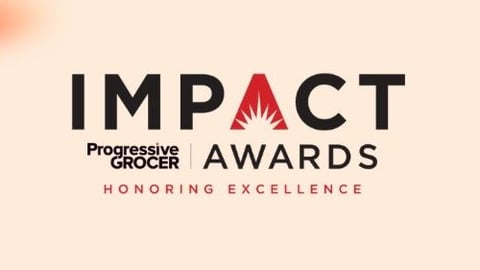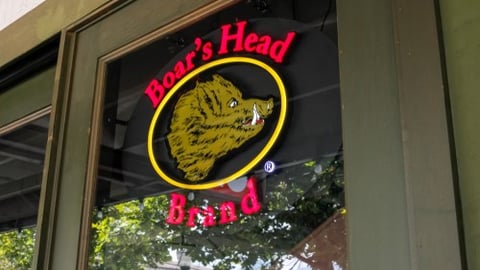Greater ‘Food Truth’ Through Data Can Reduce Food Waste
Imagine going to a grocery store, buying three bags of food and immediately tossing one in the trash as you leave. Sound irrational? Of course it does, especially considering today’s inflated food prices.
Yet that’s where we are as a society. In the United States, government officials say that 30% to 40% of the food supply is never eaten, wasting not only the food itself, but also the resources needed to produce it: water, land and energy.
[RELATED: Food Waste Programs Do More Than Lower Landfills]
In homes and grocery stores, people toss as much as 133 billion pounds of food each year, worth $161 billion. Why? Maybe they mishandled it. They bought too much. It wasn’t what they expected. They didn’t like it after all.
Or they thought it had gone bad — even if they weren’t sure.
Researchers say that 20% of food waste in the United States is caused by confusion over “sell-by” dates, or “use-by” dates, “best-before” dates and “enjoy-by” dates. Each is expressed slightly differently, but too often, consumers see any date and interpret it as the point in time when food expires.
But does it? It’s frustratingly hard to say.
When I was VP for food safety at the world’s largest food retailer, we counted 47 distinct date labels that producers used to convey important information: that this product could be considered good, safe or at optimal quality until the indicated date.
Despite everyone’s best efforts, however, not only are date labels confusing, they’re also just best guesses. The food should be good until the dates estimated, but, especially in the case of perishables, it’s hard to know how the food was handled from source to table. Maybe it had to be kept at a certain temperature. But was it?
Data holds the key to truth in best-if-used-by or use-by dates. Low-cost ambient IoT [Internet of Things] technology, which generates data while tracking food through the supply chain, is now available to do just that. The timing couldn’t be more perfect.
Confusion Requires Data-Driven Food Truth
Considering how trained we are to pick up foods and check for best-by or “use-by” dates, the practice of date labeling is unregulated. The U.S. government has, at different times, tried to tackle the issue, in part to address food waste. As I write this, the Food Date Labeling Act has been introduced in Congress and is (still) bouncing around committees.
[RELATED: Government Tries to Clear Up Confusion Over Food Date Labels]
Standardizing date labels is an important step, but it’s just the beginning, because getting this right matters. Best-if-use-by and use-by dates serve an important function: They help consumers protect their health and guide them to the freshest options. Retailers use date labels to demonstrate how committed they are to quality products. The profusion of labels causes problems, however, especially considering how much food is perfectly safe after a sell-by date.
Even so, date labels aren’t arbitrary. Food producers and retailers use a variety of methods to come up with them. They run mathematical models, with variables like moisture content, acidity level and storage temperature, to estimate how long food will be safe to eat or at maximum quality. Samples are lab-tested to gauge when and how they might become spoiled, they’re stored under various real-world conditions and sampled for quality and safety, and they’re put through changes in temperature, oxygen concentration and other factors to see what causes the food to deteriorate. After all this, food gets a sell-by date or some other date label.
Here’s the thing, though: Even under the most rigorous circumstances, a date label represents “food truth” only at the moment it’s applied and if held at the conditions studied. After that, the date itself begins to deteriorate and lose its meaning. That’s because even though a sell-by date is determined through modeling of how it’s typically handled, we can’t always know how it will be handled.
What is its food truth? That depends on factors difficult to detect. In an ideal world, a sell-by date changes dynamically, based on its journey and the conditions it has been exposed to. For example, if a shipment of food is left on a loading dock too long, or a crate of fruit gets too cold in transit, the date adjusts or is augmented. Ambient IoT tracking detects those events, understands its effects and communicates food truth in real time.
Ambient IoT as a Source of Food Truth
Ambient IoT uses inexpensive, stamp-sized, self-powered computing devices, called IoT Pixels, affixed to product packaging, containers, crates, pallets and more. These IoT Pixels communicate data wirelessly — without human intervention — to the cloud, where food companies (and eventually consumers) can investigate information like location, temperature, humidity and even carbon footprint.
By combining ambient IoT data with the known information that goes into sell-by models, food companies can know at any moment if a shipment’s handling has affected its sell-by date, i.e., its freshness and/or safety. Under ideal conditions, certain foods may even be fresher longer — updates that a grocer could helpfully pass on to shoppers.
This is real-time food truth, powered by ambient IoT. Now, how do we pass it along to consumers?
For starters, a more complete understanding of food truth allows grocers to adapt how they stock shelves. Many use a first-in, first-out model to rotate inventory and manage freshness. With ambient IoT data, they can evolve toward a first-expired, first-out model. This simple change would result in a more efficient food distribution system, allowing companies to shorten the amount of time that perishable foods spend in the supply chain.
This information can be shared with consumers, so they can make better buying decisions and waste less food. Sell-by dates can be based on better and changing data. Digital shelf labels could be programmed to display the latest freshness information. Eventually, consumers can aim their smartphones at a label or QR code and pull up all of the information that goes into a sell-by date — basically, how fresh the food is — at that moment in time.
Sell-by dates aren’t going away. Personally, I advocate just two: “Best If Used By” to communicate quality and freshness, and “Use By” for food safety.
Each of these can be more meaningful, beneficial and “true,” however, if based on real-time ambient IoT data. According to the Institute for Food Safety and Health at the Illinois Institute of Technology, often, one-third of a product’s shelf-life remains after the sell-by date. With ambient IoT data, consumers can know for sure.






